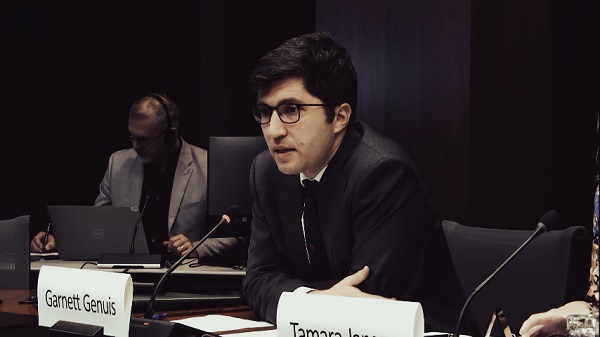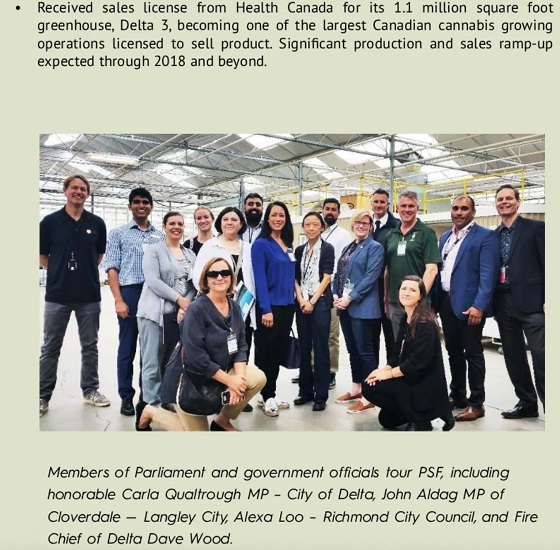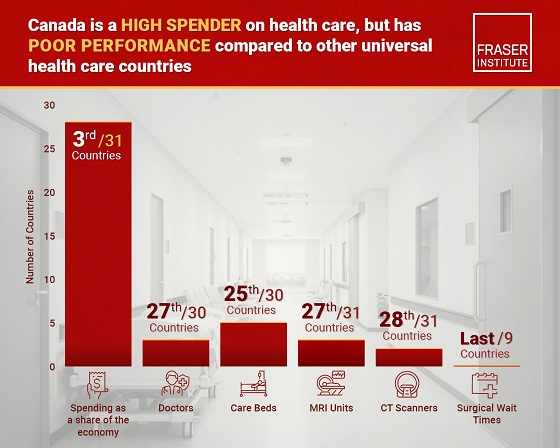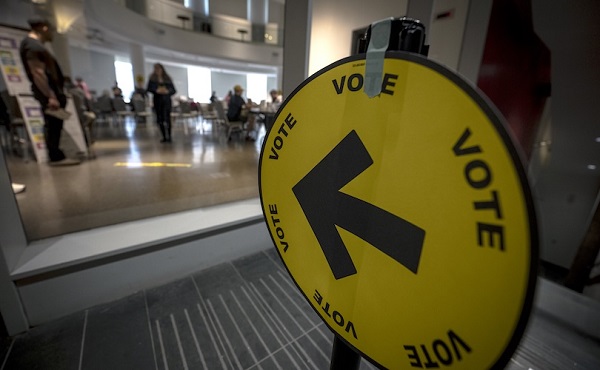Calgary
What Someone Who’s Been To ‘Mars’ Says About Isolation

During the winter of 2018, I spent two weeks at the Mars Desert Research Station (MDRS) in Utah as a citizen astronaut. The MDRS is an analog mission site, meaning it’s used to run experiments as if we were actually on Mars. It’s a facility for teams of scientists to dry run experiments and procedures, adding to the body of knowledge before we actually send people to Mars.
These simulated missions try and mimic real conditions as much as possible. We were not able to leave without a “spacesuit” on, we ate freeze-dried food, followed strict protocols, and enforced a communication delay between “Mars” and Earth. As the crew engineer for the MDRS188 team, I was responsible for the operation of the facility and to support the experiments being conducted.
But my biggest challenge was dealing with isolation. As the whole world is now finding out, isolation is a skill.
I learned a lot about myself during those two weeks. Here are some tips that I learned while dealing with isolation:
Schedule your downtime
In small confined spaces it’s easy for work to blend in with relaxation. While it may seem that working late hours is more productive, this leads to burnout very quickly. When you are working in the same place that you relax in, it’s extremely important to schedule in your downtime.
While in simulation, we had set time where we would drop what we were doing and commit to downtime. We scheduled movie nights, played games, did yoga; anything but work. This allowed our minds to take a break and relax. Just like a muscle, you need to allow rest time for your brain else it will get overworked.
Scheduling downtime every day meant that we were able to start every day fresh and relaxed.
Personal Status updates
As the COVID-19 situation unfolds, it’s important to understand how those changes are affecting you. Each person, city, and country will be affected differently. We are programmed to deal with adversity, but all too often our coping mechanism is to power through issues.
While that can work in the short term, it’s a disastrous longterm solution.
During the mission, we had morning briefings to go over our daily and weekly objectives. These meetings followed a normal work agenda, but we also spoke about personal issues. We talked about how we were feeling, how yesterday went, and how we wanted to adjust our work to maximize our output.
Each person needed to understand their own status before they could properly share it with the team.
Reflecting on your own status allows you to adjust your actions. What worked yesterday may not work today. The schedule you had in the office may not work at home. You need to experiment to find what works for you. Try 10 pushups before a meeting to replace your 10 am walk, or maybe you need to schedule a 5 pm call with your team to gossip about issues at the office.
Baking sourdough bread may have been fun week 1, but it’s lost its luster on week 4. We are all in a stressful situation, and it’s necessary to make adjustments along the way.
Doing honest checkups with yourself allows you to adjust your behavior to fit your needs.
Never Stop Communicating
When we spent long periods of time alone, it can become a habit to keep to ourselves. Dynamic situations are when we need to communicate the most. You need to take extra efforts to reach out to people and maintain communication links with them.
The MDRS is a remote facility without anyone else for miles around. There is also an imposed communication delay to mimic the distance from the Earth to Mars. It truly felt like we were all alone. Right from day one, we made sure to keep communication between the team open, honest, and frequent. It was vitally important for the success of the mission and our own mental health.
You should put extra effort into communicating with your family, friends, and coworkers more than ever in periods of stress.
Have Fun
Fun is extremely important to your mental health. In times of prolonged stress it’s more important to actively look for fun in order to calm your central nervous system.
For long-duration space missions, the human element is the biggest variable. All the machines and hardware can be analyzed down to the millimeter, but the humans are always changing. A big research component of analog missions is testing team dynamics and maximizing performance. Having fun is a big part of being human, and leads to better performance. On our mission having fun was an explicit component that we researched.

Remember, isolation is a marathon, not a sprint. You have to adjust the way you tackle new challenges so that you can maintain your work output. This requires you to be honest with yourself and seek guidance from others. It’s a skill like any other, and it takes practice.
For more stories, visit Todayville Calgary
Alberta
Calgary’s High Property Taxes Run Counter to the ‘Alberta Advantage’

By David Hunt and Jeff Park
Of major cities, none compare to Calgary’s nearly 50 percent property tax burden increase between censuses.
Alberta once again leads the country in taking in more new residents than it loses to other provinces and territories. But if Canadians move to Calgary seeking greater affordability, are they in for a nasty surprise?
In light of declining home values and falling household incomes amidst rising property taxes, Calgary’s overall property tax burden has skyrocketed 47 percent between the last two national censuses, according to a new study by the Aristotle Foundation for Public Policy.
Between 2016 and 2021 (the latest year of available data), Calgary’s property tax burden increased about twice as fast as second-place Saskatoon and three-and-a-half times faster than Vancouver.
The average Calgary homeowner paid $3,496 in property taxes at the last census, compared to $2,736 five years prior (using constant 2020 dollars; i.e., adjusting for inflation). By contrast, the average Edmonton homeowner paid $2,600 in 2021 compared to $2,384 in 2016 (in constant dollars). In other words, Calgary’s annual property tax bill rose three-and-a-half times more than Edmonton’s.
This is because Edmonton’s effective property tax rate remained relatively flat, while Calgary’s rose steeply. The effective rate is property tax as a share of the market value of a home. For Edmontonians, it rose from 0.56 percent to 0.62 percent—after rounding, a steady 0.6 percent across the two most recent censuses. For Calgarians? Falling home prices collided with rising taxes so that property taxes as a share of (market) home value rose from below 0.5 percent to nearly 0.7 percent.
Plug into the equation sliding household incomes, and we see that Calgary’s property tax burden ballooned nearly 50 percent between censuses.
This matters for at least three reasons. First, property tax is an essential source of revenue for municipalities across Canada. City councils set their property tax rate and the payments made by homeowners are the backbone of municipal finances.
Property taxes are also an essential source of revenue for schools. The province has historically required municipalities to directly transfer 33 percent of the total education budget via property taxes, but in the period under consideration that proportion fell (ultimately, to 28 percent).
Second, a home purchase is the largest expense most Canadians will ever make. Local taxes play a major role in how affordable life is from one city to another. When municipalities unexpectedly raise property taxes, it can push homeownership out of reach for many families. Thus, homeoowners (or prospective homeowners) naturally consider property tax rates and other local costs when choosing where to live and what home to buy.
And third, municipalities can fall into a vicious spiral if they’re not careful. When incomes decline and residential property values fall, as Calgary experienced during the period we studied, municipalities must either trim their budgets or increase property taxes. For many governments, it’s easier to raise taxes than cut spending.
But rising property tax burdens could lead to the city becoming a less desirable place to live. This could mean weaker residential property values, weaker population growth, and weaker growth in the number of residential properties. The municipality then again faces the choice of trimming budgets or raising taxes. And on and on it goes.
Cities fall into these downward spirals because they fall victim to a central planner’s bias. While $853 million for a new arena for the Calgary Flames or $11 million for Calgary Economic Development—how City Hall prefers to attract new business to Calgary—invite ribbon-cuttings, it’s the decisions about Calgary’s half a million private dwellings that really drive the city’s finances.
Yet, a virtuous spiral remains in reach. Municipalities tend to see the advantage of “affordable housing” when it’s centrally planned and taxpayer-funded but miss the easiest way to generate more affordable housing: simply charge city residents less—in taxes—for their housing.
When you reduce property taxes, you make housing more affordable to more people and make the city a more desirable place to live. This could mean stronger residential property values, stronger population growth, and stronger growth in the number of residential properties. Then, the municipality again faces a choice of making the city even more attractive by increasing services or further cutting taxes. And on and on it goes.
The economy is not a series of levers in the mayor’s office; it’s all of the million individual decisions that all of us, collectively, make. Calgary city council should reduce property taxes and leave more money for people to make the big decisions in life.
Jeff Park is a visiting fellow with the Aristotle Foundation for Public Policy and father of four who left Calgary for better affordability. David Hunt is the research director at the Calgary-based Aristotle Foundation for Public Policy. They are co-authors of the new study, Taxing our way to unaffordable housing: A brief comparison of municipal property taxes.
Alberta
Calgary taxpayers forced to pay for art project that telephones the Bow River

From the Canadian Taxpayers Federation
The Canadian Taxpayers Federation is calling on the City of Calgary to scrap the Calgary Arts Development Authority after it spent $65,000 on a telephone line to the Bow River.
“If someone wants to listen to a river, they can go sit next to one, but the City of Calgary should not force taxpayers to pay for this,” said Kris Sims, CTF Alberta Director. “If phoning a river floats your boat, you do you, but don’t force your neighbour to pay for your art choices.”
The City of Calgary spent $65,194 of taxpayers’ money for an art project dubbed “Reconnecting to the Bow” to set up a telephone line so people could call the Bow River and listen to the sound of water.
The project is running between September 2024 and December 2025, according to documents obtained by the CTF.
The art installation is a rerun of a previous version set up back in 2014.
Emails obtained by the CTF show the bureaucrats responsible for the newest version of the project wanted a new local 403 area code phone number instead of an 1-855 number to “give the authority back to the Bow,” because “the original number highlighted a proprietary and commercial relationship with the river.”
Further correspondence obtained by the CTF shows the city did not want its logo included in the displays, stating the “City of Calgary (does NOT want to have its logo on the artworks or advertisements).”
Taxpayers pay about $19 million per year for the Calgary Arts Development Authority. That’s equivalent to the total property tax bill for about 7,000 households.
Calgary bureaucrats also expressed concern the project “may not be received well, perceived as a waste of money or simply foolish.”
“That city hall employee was pointing out the obvious: This is a foolish waste of taxpayers’ money and this slush fund should be scrapped,” said Sims. “Artists should work with willing donors for their projects instead of mooching off city hall and forcing taxpayers to pay for it.”
-

 Automotive1 day ago
Automotive1 day agoParliament Forces Liberals to Release Stellantis Contracts After $15-Billion Gamble Blows Up In Taxpayer Faces
-

 National1 day ago
National1 day agoPolitically Connected Canadian Weed Sellers Push Back in B.C. Court, Seek Distance from Convicted Heroin Trafficker
-

 Alberta1 day ago
Alberta1 day agoPetition threatens independent school funding in Alberta
-

 Courageous Discourse1 day ago
Courageous Discourse1 day agoNo Exit Wound – EITHER there was a very public “miracle” OR Charlie Kirk’s murder is not as it appears
-

 MAiD23 hours ago
MAiD23 hours agoDisabled Canadians increasingly under pressure to opt for euthanasia during routine doctor visits
-

 Business1 day ago
Business1 day agoCanada has fewer doctors, hospital beds, MRI machines—and longer wait times—than most other countries with universal health care
-

 Business2 days ago
Business2 days agoQuebecers want feds to focus on illegal gun smuggling not gun confiscation
-

 Censorship Industrial Complex1 day ago
Censorship Industrial Complex1 day agoWho tries to silence free speech? Apparently who ever is in power.




